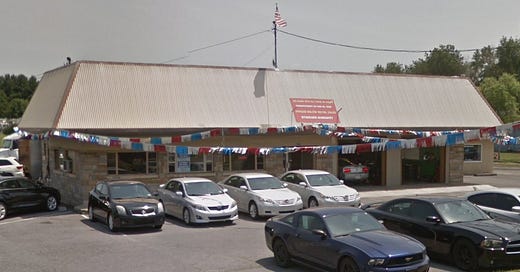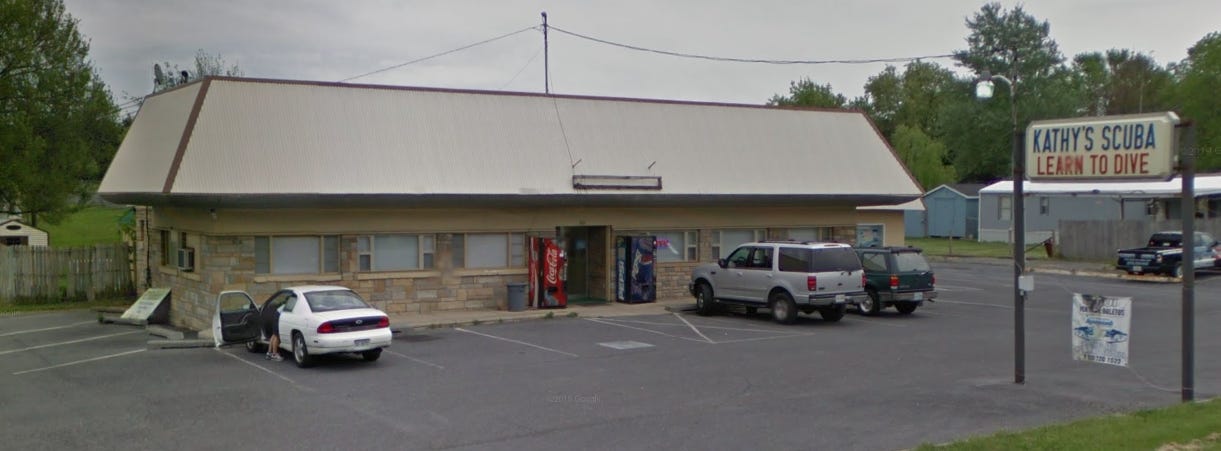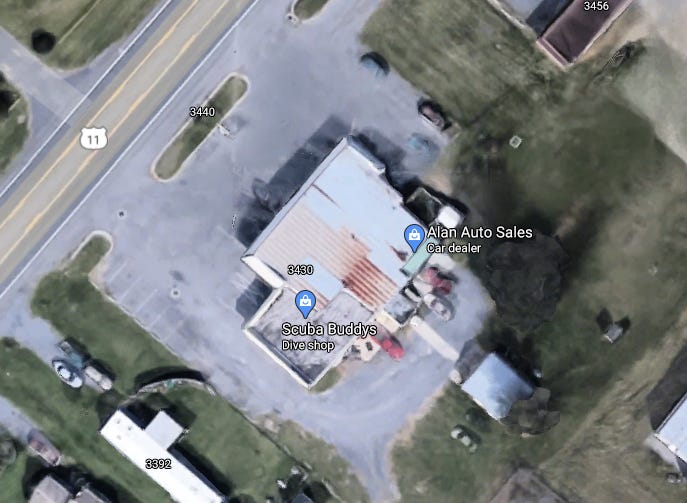What Do You Think You're Looking At? #2
A fun illustrated series on the unexpected lives of commercial buildings
The first entry in this series didn’t have a name yet, but here it is, featuring a fragment of an old U-shaped motel which is now a small store. “What Do You Think You’re Looking At?” will run every Wednesday, and may be a subscriber-only bonus once I set up paid subscriptions. Each entry consists of images of a building, with a history of the building’s uses below.
Here’s today’s entry, on U.S. Route 11 outside of Harrisonburg, Virginia. (Route 11 is a gold mine of roadside history—check out a long and heavily illustrated essay I did on driving it, last November.)
Here’s the same building several years ago, in a form that’s closer to its original use. If you’ve got a sharp, observant eye, you might be able to guess it from this image.
So it didn’t begin life as a gas station or auto garage, which is the obvious guess based on its appearance today—because the garages were added recently. So what type of commercial building has a long and narrow shape, with a symmetrical, window-heavy front, and a small parking lot up against the building? Well, this!
You can see that aside from the roof and the small store now appended to its right, the building remained, until the addition of the garages, in pretty much the same form. Three symmetrical front windows, a center door, and two windows on each narrow side. Even the vertical three-part edges on the front windows survive today. The building dates back to the early 1960s, which I verified on a Virginia Facebook group (where I ran into the daughter of the man who opened this restaurant!) and with NETR Historic Aerials.
Here’s the current satellite view of this building, which shows that it has a number of additions to the back. One of these may have been a kitchen or even a living quarter. Some expansion may have taken place after the building was no longer a restaurant. There’s a motel directly across the street from the same era, for which this diner would basically have served as a dining room.
On an older road like Route 11, it’s likely that most of the buildings used to be something else. Some have simply been a succession of similar businesses, such as a series of restaurants, auto garages, or banks. But others, like this one, have a much more eclectic and adaptable history than critics of sprawl-style development—myself included—often recognize.







